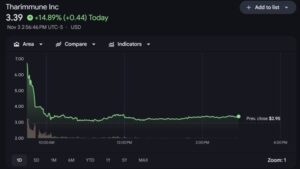The Decline of Retail Participation in Bitcoin: Insights and Implications
Introduction
As the cryptocurrency landscape shifts, Bitcoin (BTC) has recently witnessed a notable decline in retail participation, fundamentally changing how small investors engage with the asset. In January 2024, the introduction of Exchange-Traded Funds (ETFs) played a pivotal role in this decline, altering not just the dynamics of buying and selling but also affecting the overall sentiment around Bitcoin. In this analysis, we explore the reasons behind the dwindling retail interest, its implications for Bitcoin, and what this shift means for future investment strategies.
The Impact of ETFs on Retail Participation
The rollout of Spot Bitcoin ETFs in early 2024 has dramatically reshaped the landscape for small retail investors. Prior to this, retail participation had been robust, with average daily inflows exceeding 450 BTC. However, recent data highlights a staggering decrease, with inflows dropping to just 92 BTC. This shift points to a fundamental change in investment behavior, where smaller investors are increasingly favoring ETF products over direct Bitcoin purchases. It suggests not only a reaction to market volatility but also a tendency for new investors to seek regulated, less complex investment vehicles, ultimately leading to a significant downturn in retail engagement with Bitcoin.
Data Insights: Charting Retail Inflows
The decline in retail participation is vivid when examined through the lens of on-chain data. According to recent analyses, retail inflows, categorized as those holding less than 0.1 BTC (often referred to as "shrimp"), have diminished to a mere 20% of what they were earlier in 2024. This reduction reflects a broader trend where the number of addresses holding Bitcoin has stalled, showcasing that retail investors are not only withdrawing from active participation but are also increasingly leaning towards passive investment strategies, thereby altering the traditional dynamics of Bitcoin trading.
Institutional Shift: The Rise of Larger Players
Interestingly, as retail participation wanes, the scales are tipping toward institutional investors. The volume of Bitcoin flowing to exchanges like Binance from institutional accounts has outpaced that from retail sources. Earlier this year, the lowest average inflow of Bitcoin recorded for retail accounts was dwarfed by institutional transactions, which have consistently remained substantial. This trend emphasizes how institutional dominance is reshaping market dynamics, making retail transactions less relevant in terms of market impact.
Historical Context: Satoshi’s Vision vs. Current Reality
The evolution of Bitcoin from its inception raises questions about its original mission. Satoshi Nakamoto envisioned Bitcoin as a permissionless, peer-to-peer electronic cash system. However, the reality has diverged significantly from that vision. As Bitcoin has transformed into a speculative asset, retail investors appear to be distancing themselves, favoring more traditional and stable investment routes like ETFs. This marked shift poses questions about the future utility of Bitcoin and how it will continue to function within financial ecosystems.
Implications for the Future of Bitcoin
While the decline in retail participation does not directly affect Bitcoin’s price trends, it underscores a significant shift in investor behavior. The emergence of institutional investors and ETFs suggests that the market’s structure is evolving, potentially leading to less volatility but also diminishing individual investor influence. This evolving landscape means that new strategies will be necessary for retail investors to feel re-engaged. As Bitcoin continues to grapple with these changes, it remains imperative for both retail and institutional participants to adapt to the new market realities, ensuring that they remain relevant in this continually evolving space.
Conclusion
The transformation of Bitcoin’s investment landscape is evident, with retail participation declining significantly in favor of institutional investment and ETFs. As smaller investors navigate a changing market dominated by larger players, their approach to engaging with Bitcoin will need to evolve. This shift highlights the necessity for new strategies and a reassociated vision as the cryptocurrency matures. While the essence of Bitcoin persists, the future will require redefined participation strategies to embrace both traditional and innovative investment pathways.
















